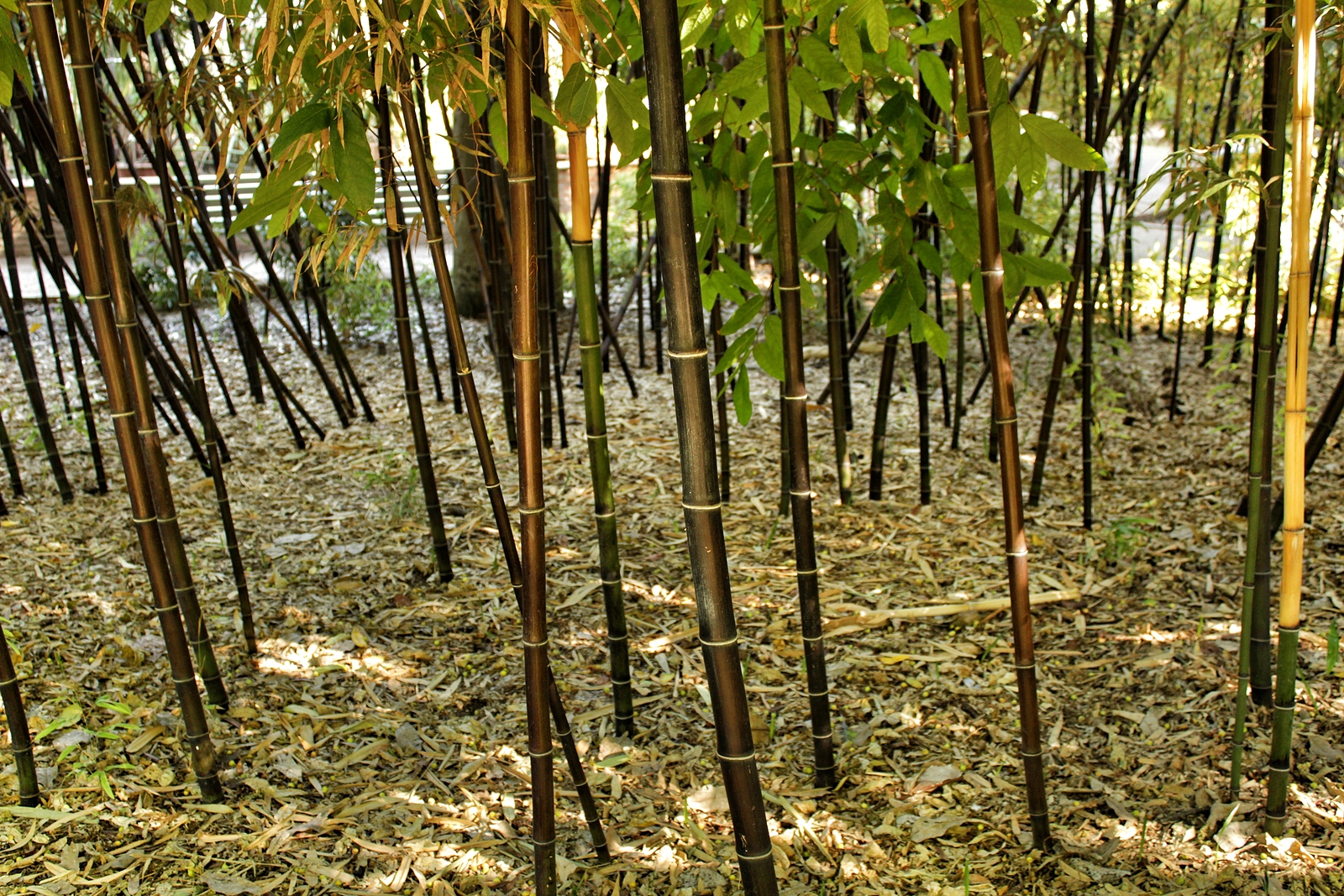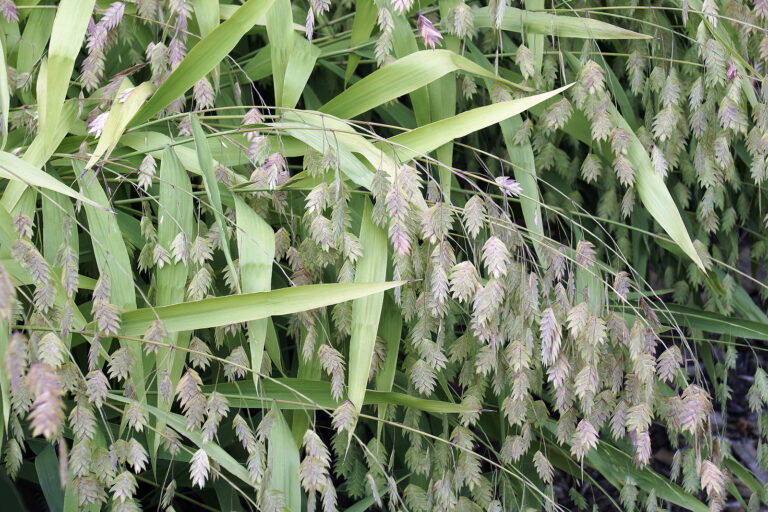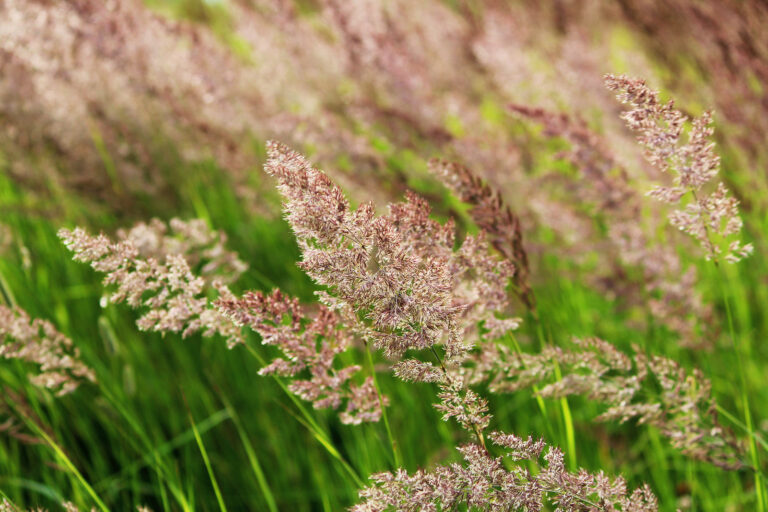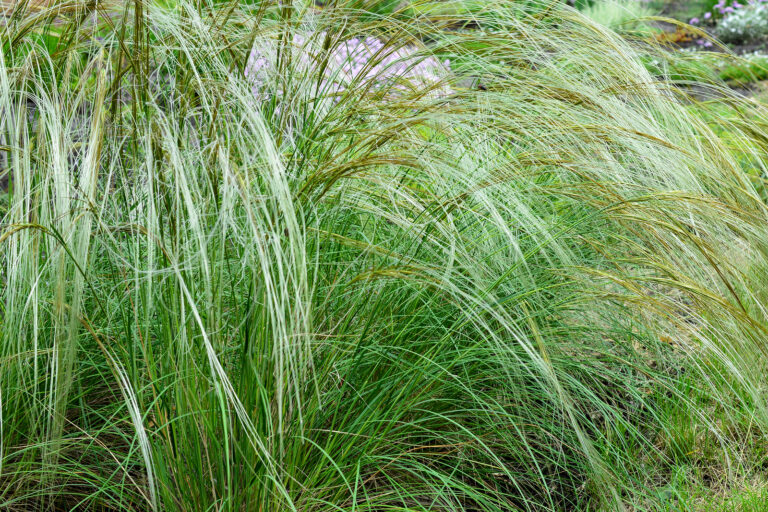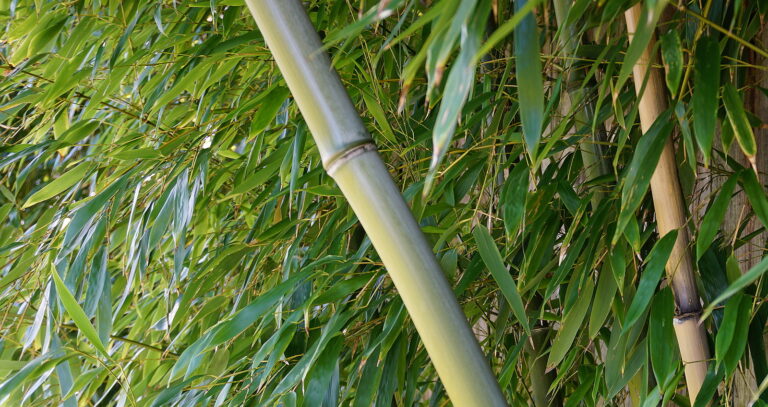How to Grow Bamboo – Phyllostachys
Phyllostachys–commonly called bamboo–is an evergreen giant grass grown for its upright culms (hollow stems) and yellow-green or light to dark green, narrowly lance-shaped leaves. Phyllostachys are suitable for containers outdoors, as specimen plants, or in groups along with other shrubs in a border.
Phyllostachys are valued for their elegant form and foliage; some are colored yellow and others black. The culms (hollow stems) are often grooved and zig-zag from node to node. Phyllostachys can be grown in full sun or dappled shade and prefer humus-rich soil.
Phyllostachys is a genus of 80 species of medium-sized to large, evergreen bamboos. There are two types of bamboo, clump-forming and running. Running bamboos spread via underground rhizomes and can become very difficult to contain. Clump-forming bamboos spread–usually a few inches a year; they are the most suitable bamboos for gardens.
A related bamboo genus is Bambusa.
Get to know Phyllostachys
- Plant type: Evergreen bamboos; members of the grass family (Poaceae)
- Growing zones and range: Zones 5-11 depending on the variety
- Hardiness:
- Height and width: 6 to 35 feet (2-11m) depending on the variety
- Foliage: Narrowly lance-shaped yellow green or light to dark green leaves
- Uses: Border, screen, container plant
- Common name: Bamboo
- Botanical name: Phyllostachys
- Family name: Poaceae
- Origin: Woodlands in East Asia and the Himalays

Where to plant Phyllostachys
- Light outdoors: Grow Phyllostachys in full sun or dappled shade.
- Soil outdoors: Grow in fertile, humus-rich, but well-drained soil.
When to plant Phyllostachys
- Set Phyllostachys outdoors in spring.
Planting and spacing Phyllostachys
- Space Phyllostachys 6 to 20 feet (2-6m) apart.
How to water and feed Phyllostachys
- Water Phyllostachys regularly and moderately.
- Fertilize Phyllostachys with a balanced liquid fertilizer monthly.
Phyllostachys care
- Where not hardy, shelter Phyllostachys from cold, drying winds.
Phyllostachys pests and diseases
- Slugs and snails attack emerging shoots.
- Rust and stem smut can occur.
Phyllostachys propagation
- Divide Phyllostachys in spring.
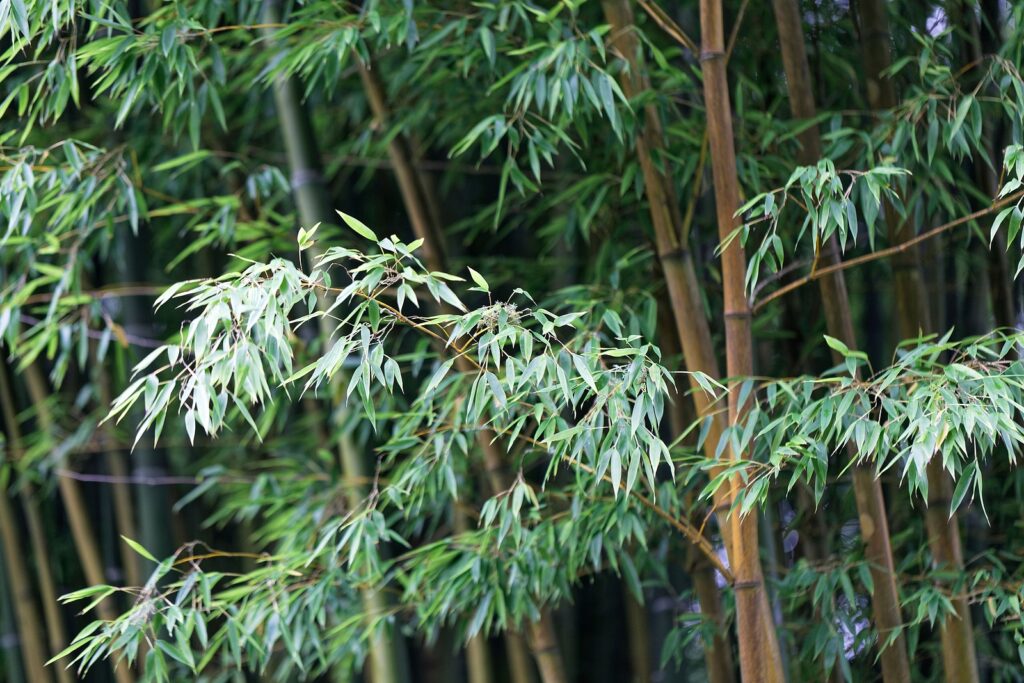
Phyllostachys varieties to grow
- Phyllostachys aurea, golden bamboo. Clump-forming, stiffly, upright bamboo grows 6 to 30 feet tall; grooved culms (hollow stems) are bright-mid-green early and become brown yellow with age; narrowly lance-shaped yellowis to golden green leaves.
- P. aureosulcata, yellow-groove bamboo. Clump-forming bamboo grows 10 to 20 feet tall; brownish green culms with yellow grooves and striped sheaths; narrowly lance-shaped mid-green leaves.
- P. bambusoides, giant timber bamboo. Clump-forming; grows 10 to 25 feet; thick shiny deep green culms and large thick sheaths; narrowly lance-shaped mid-green leaves.
- P. fulcis, sweetshoot bamboo. Upright, mid-green culms grow to 40 feet; narrowly lance-shaped mid-green leaves.
- P. flexuosa, zigzag bamboo. Arching culms, often zigziagged between nodes; grows to 30 feet ; bright geen at first, turning yellow-brown to almost black with age; narrowly lance-shaped fresh green leaves.
- P. nidularia, swollen node bamboo. Clump formng bamboos grows to 35 feet, broadly lance-shaped, smooth green leaves.
- P. nigra, black bamboo. Clump-forming to 10 feet tall; arching slender green culms turn lustrus black in second year; lance-shaped dark green leaves.
- P. violascens. Clump-forming then spreading bamboo wiht swollen green clums, grow to 16 feet; finely striped purple become violet; narrow, lances-shaped dark green leaves.
- P. viridi-glaucescens. arching, smooth green clums grow to 40 feet; broadly, lance=-shaped, mid-green leaves.
- P. vivax. Upright culms to 70 feet tall; smooth mid-green culms with a white powdery band beneath each nodes.
Also of interest:

